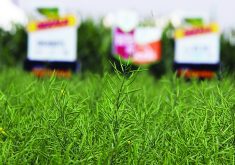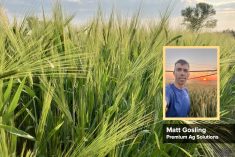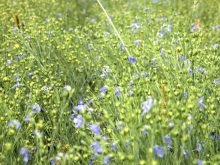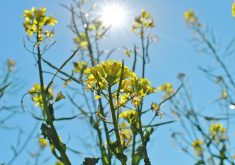Saskatchewan’s provincial wheat commission is reminding farmers to follow label directions when applying desiccants or weed control products to standing crops this fall.
It’s not a new message, says SaskWheat chair Bill Gehl, but it’s one that needs to be repeated to ensure producers are using the products correctly and not negatively affecting the quality or marketability of Canada’s harvested grains.
“That’s the main message that we’re trying to get across is to make sure you follow label directions,” Gehl said.
Read Also

Farming Smarter receives financial boost from Alberta government for potato research
Farming Smarter near Lethbridge got a boost to its research equipment, thanks to the Alberta government’s increase in funding for research associations.
“I think where there’s a little bit of confusion is when you’re applying glyphosate at harvest time and (the label) says 30 percent moisture or less, that means 30 percent moisture over 100 percent of the field, not 30 over 90 or 95 percent of the field.”
True desiccant products such as Reglone (diquat) are designed to expedite the dry-down process and ensure greater uniformity in harvested crops.
Using pre-harvest glyphosate is more effective in terms of weed control but unlike diquat, glyphosate is not designed to achieve rapid dry-down.
Thorough dry-down after a glyphosate application could take 10 to 14 days, as opposed to four to seven with a diquat-based product.
In either case, improper use can have far-reaching implications.
The crop should be in the hard dough stage when glyphosate is applied to standing cereals, which generally means lower than 30 percent moisture.
“Those green spots in the field that are above 30 percent? It’s not like swathing, where you can just drive through it and tell yourself it’s going to be OK,” Gehl said.
The crop is physiologically mature at the hard dough stage, and chemical residues will not translocate into kernels.
Most countries that import Canadian grain have established their own maximum residue levels but within those countries, some foreign buyers establish their own thresholds, which are even more stringent.
Saskatchewan’s Guide to Crop Protection warns that crops treated with diquat may have market access issues beginning this year.
Growers who are considering using diquat products or any other pre-harvest chemical are encouraged to contact grain companies to ensure that market access issues do not arise.
“With science the way it is today, they can detect very, very low levels of herbicides in grain shipments, and it’s not just glyphosate. It’s all of the herbicides that we apply,” Gehl said.
“We have to be very conscious of everything that we do on the farm.”
Cam Dahl, president of Cereals Canada, said some countries have yet to establish MRLs for chemical products that are being used in Western Canada.
In countries that do have MRLs, grain buyers and food processors are often facing increased pressure from activist groups or consumers to source commodities that are residue free.
“I keep reminding people that a part per billion is equivalent to one second in 32 years and a part per trillion, which is the level we can now test at, is one second in 32,000 years,” he said.
The Canadian Grain Commission tests outgoing grain vessels to ensure that residue limits meet specifications set by importers.
Nonetheless, careless use of chemical products on the farm can have costly consequences at other points in the supply chain.
“If I had a Top 10 list of things that farmers could do (to avoid MRL related problems), numbers one through 10 would be, ‘follow the label,’ ” Dahl said.


















